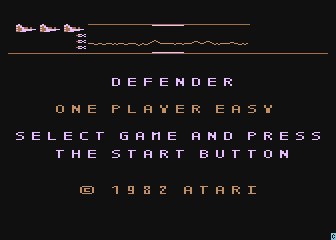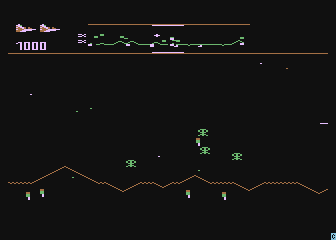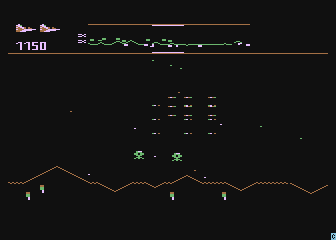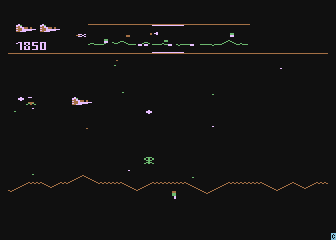|
|
Defender
|
Name:
|
Defender |
 |
| Company: | Atari | |
|
Model #:
|
RX-8025 | |
|
Programmer:
|
Steve Baker (original version) & Michael Colburn (alt. version) | |
| Year: | 1982 | |
|
Released?
|
Yes (original version only)
|
|
|
Notes:
|
Two completely different versions exist |
Defender was an instant classic when it hit the arcades in 1980 due its unique blend of speed, difficulty, and addictive gameplay. But did you know that Defender was actually deemed to be a flop when it was shown for the first time? It seems that most experts thought that Defender's high difficulty level would turn off most causal gamers, but in a strange twist of fate it would be that very difficulty that would end up making Defender one of the highest grossing games in history (well over a billion dollars). For it seems that many gamers would spend hours studying the enemy's patterns trying to come up with a strategy that would allow them to survive just a little bit longer (pumping in quarters the whole time).
Needless to say Atari had to have this arcade juggernaut for its home systems and versions were planned for the Atari 2600, 5200, and 400/800. While the 2600's limitations made the VCS version somewhat of a disappointment, the Atari 8-bit computers were more than capable of bringing Defender home in all its arcade glory. However instead of tapping one of their internal programmers to program this version, Atari decided to bring in newcomer Steve Baker to handle the programming. Steve was no stranger to Defender, he had once written a version of it for the Apple IIe while learning to program, so he was a natural to bring it to the Atari 400/800.
Unlike the Atari 5200, the Atari 400/800 only has one button so the spacebar is used for triggering the smart bomb. While this isn't as awkward as the 2600 version (where you had to go down into the mountains to use the bomb). Hyperspace is handled by pressing one of the other keys, which actually makes it useful since you can actually hit it quickly enough to get out of trouble. The Atari 5200 version improved on these controls with its second button and keypad on the controller, making it superior to the 8-bit version.
The graphics in this version are fairly spot on and show the 400/800's ability to bring the arcade experience home (which is good since it was supposed to be the home arcade machine). The sounds aren't exactly the same as they are in the arcade, but many people (including myself) actually like them better. There's only a slight hint of slowdown and flicker present in the game, and only when there's a mass of enemies on the screen. However it's the gameplay where Defender really shines, Steve put a lot of effort into this version to make sure it was 100% arcade accurate and it shows.
| Version | Cart Text | Description |
| 8/??/82 | N/A | Alternate version (Rev 0) |
| 8/??/82 | N/A |
Alternate version (Rev 2) |
| 8/??/83 | Defender (C)1983 Atari Rev A Serial #12 |
Final Version |



